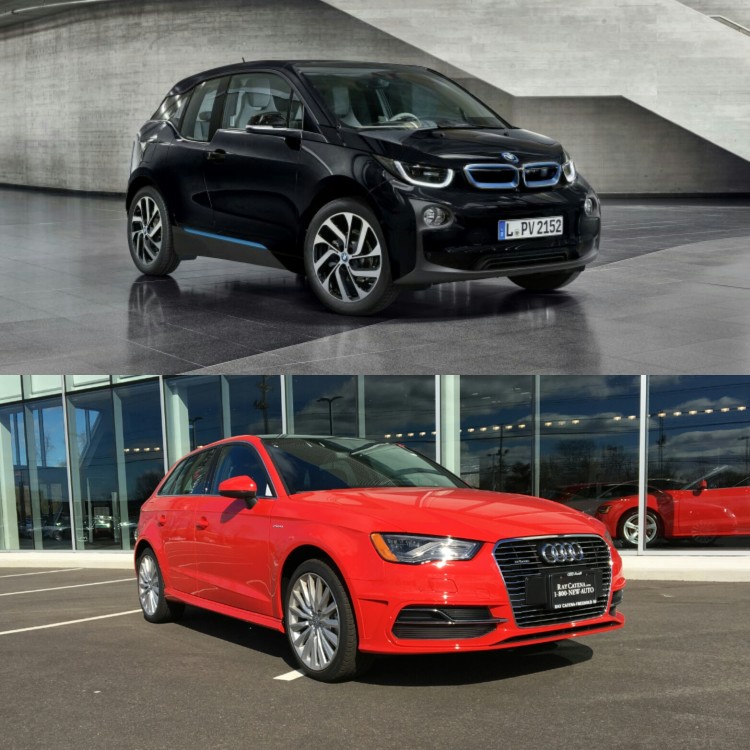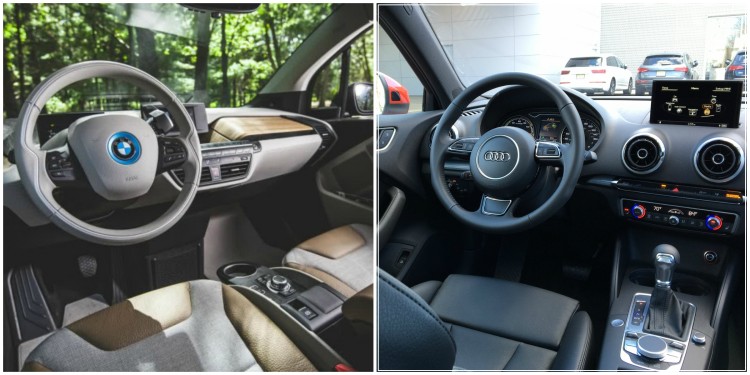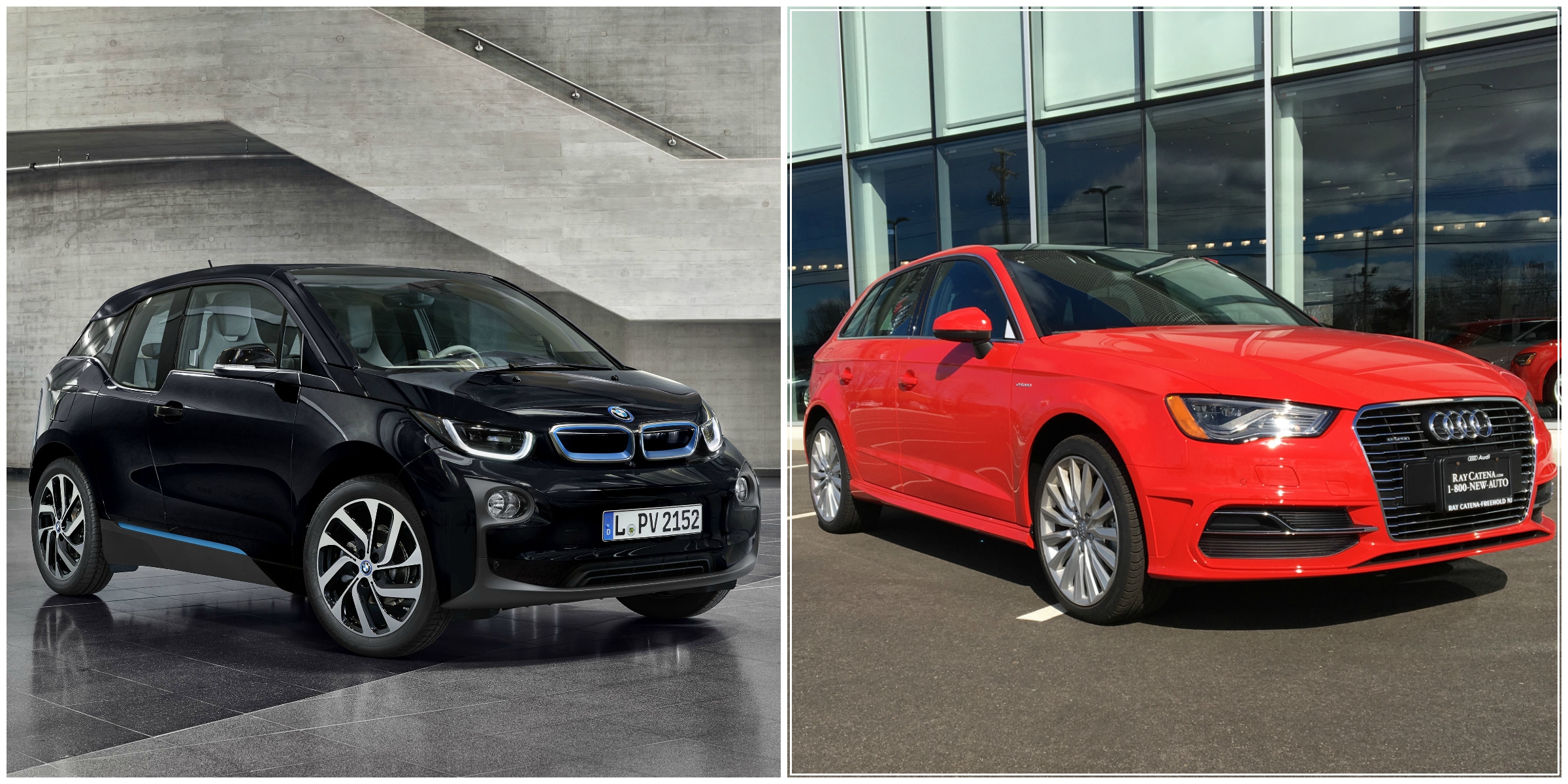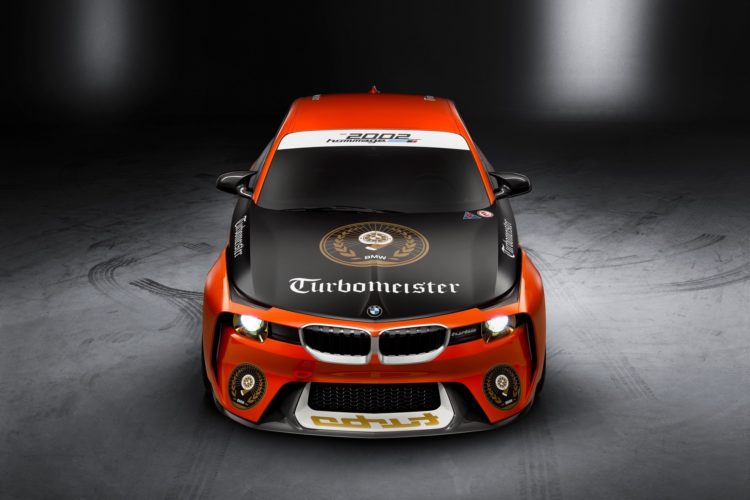BMW’s i3 faces little competition from its traditional German rivals. For i3 competition, one must mostly look outside of Germany to either Japan or America, for either the Nissan Leaf or Chevy Bolt. However, the oft-forgotten Audi A3 e-tron hails from Germany and attempts at competing with the i3. Though, the A3 e-tron is actually a plug-in hybrid, rather than a purely BEV (Battery Electric Vehice) like the BMW i3. So how do the two German alternative fueled vehicles compare against each other?
Wheels Magazine decided to find out in a recent test between the two cars. The BMW i3 in question is an i3 REx, which is the Range Extender model that comes with a 647cc engine under the trunk floor. That engine acts as a generator, giving the electric motor juice when the battery goes flat. The new BMW i3 REx has a range just a bit short of the i3 BEV’s 114 miles, but its range extender can add up to an additional 93 miles. With a fully charged battery, the i3 REx can get from 0-60 mph in around 7.8 seconds, which is quite brisk for a little EV and faster than all of its traditional competition, save for the upcoming Chevy Bolt.

The BMW i3 is also made mostly from carbon fiber, making it very, very light. In fact, the BMW i3 REx weighs in at only around 2,800 lbs. That helps its relatively small 167 hp electric motor get it to 60 mph so quickly and use so little range. The carbon fiber construction and lightweight design is the BMW i3’s real party trick and what separates it from the rest of the pack.
By comparison, the Audi A3 e-tron is a bit primitive. It’s essentially just a standard Audi A3 fitted with a plug-in hybrid powertrain. Under the hood lies a 1.4 liter TFSI turbocharged four-cylinder engine that makes just 147 hp and 184 lb-ft of torque. That engine is paired with a 100 hp/243 lb-ft torque electric motor and sends its power through a six-speed dual-clutch automatic gearbox to the front wheels.
In terms of performance, the A3 e-tron is capable of 0-60 mph in about 7.5 seconds. So it’s actually a bit quicker than the i3. Thank the combined powertrain for that, as the A3 e-tron is considerably heavier than the i3, at 3,395 lbs. The A3 e-tron can drive on battery power alone, but the EPA only rates it at around 17 miles of range, so it won’t go very far. And, in pure EV mode, don’t expect to go very quickly, as even slight prods of the accelerator wake the 1.4 liter engine up. However, when the battery runs flat, the A3 e-tron is capable of just driving until it needs to refuel, like a normal car.
Speaking of driving, both of these cars come from companies known for their driving dynamics. So how well do they handle against each other? Well, the BMW i3 has a significant advantage right off the bat. It’s far lighter than the Audi and it’s rear-wheel drive. This gives it an inherently better chassis for handling dynamics. And it shows. The BMW i3 is a very fun little EV to drive and, aside from the ludicrous speeds of a Tesla Model S, probably the best driving EV in the world. Its light weight and rear-drive make it a blast through corners, as it just darts around with incredible willingness for something so small and underpowered. It’s almost embarrassing how fun the i3 is to drive, because on the outside, it’s just a funny looking electric hatchback.

While the Audi A3 e-tron isn’t bad at all to drive around town, it doesn’t really inspire much confidence through corners. Where the i3 will understeer a bit because of the lack of weight over the front wheels and narrow tires, the A3 e-tron understeers even more because of the immense amount of weight way out ahead of the front axle and its front-wheel drive layout. Also, its steering is lacking in any sort of meaningful feel or weight and is pretty uninspiring. While the i3’s steering is obviously numb, it’s weighted nicely and very sharp and accurate. However, the A3 rides a bit nicer and is more comfortable everyday. It’s a fine city car, but lacking in the fun department.
Inside of both cars, you’re greeted with nice interiors. The A3 e-tron’s is essentially an Audi A3’s cabin with an EV button and some new gauges. Aside from that, it’s typical Audi A3. Which isn’t a bad thing, as the cabin is nicely laid out, good looking and well made. It’s just boring in such a high-tech car.
On the flip-side, the BMW i3’s cabin is funky futuristic. With exposed carbon everywhere and interesting materials, such as bamboo and recycled cloth, the i3’s cabin is a genuinely interesting place to be. It’s also far more open and airy, thanks to its lack of engine or transmission. And because of its incredibly rigid and strong carbon fiber construction, its pillars are thin and devoid of a B-pillar, which gives the interior a much roomier feel than it actually is.

In the end, Wheels gives the win to the BMW i3. The Audi A3 e-tron isn’t a bad car by any means. In fact, as someone’s only car, the e-tron is probably the better choice, because it excels at being a fuel-efficient city car and can also double as a long-distance cruiser. For a do-it-all hybrid, the Audi A3 e-tron is quite excellent. But the BMW i3 is the far more innovative, far more interesting car of the two. Plus, it’s nicer to drive and feels more expensive. So it takes the win.
We want to note that we did a similar comparison last year and came away with incredibly similar opinions. So it’s not just us.
[Source: WheelsMag]





































































